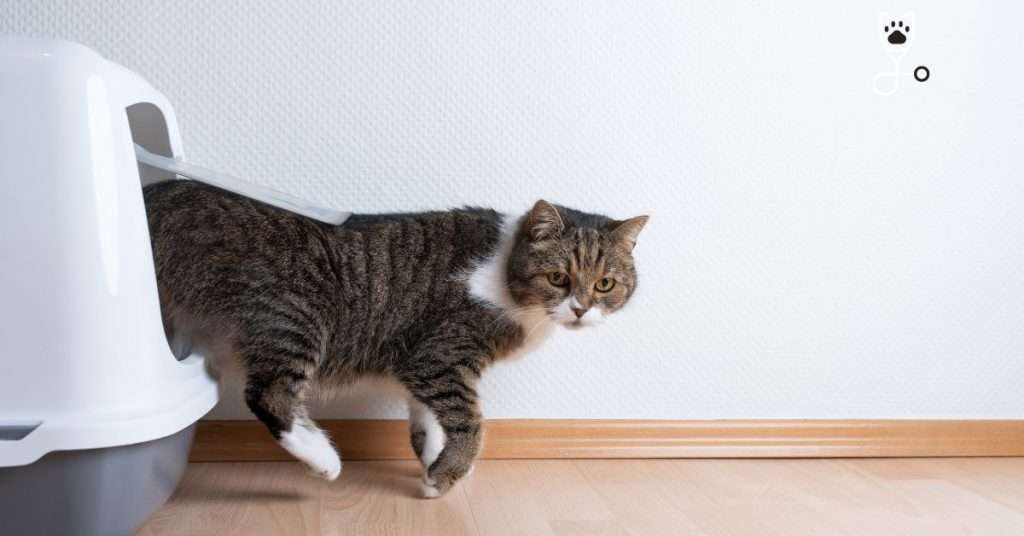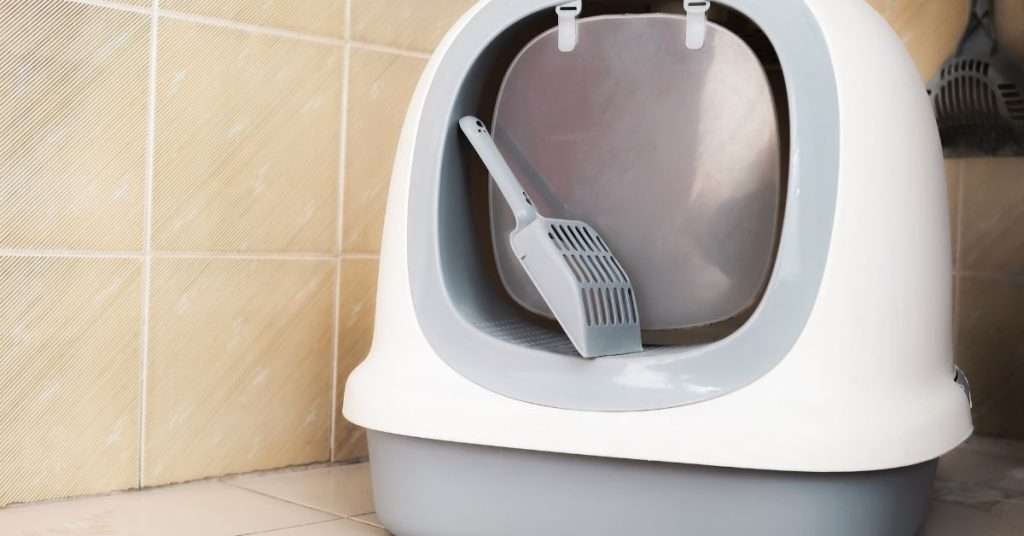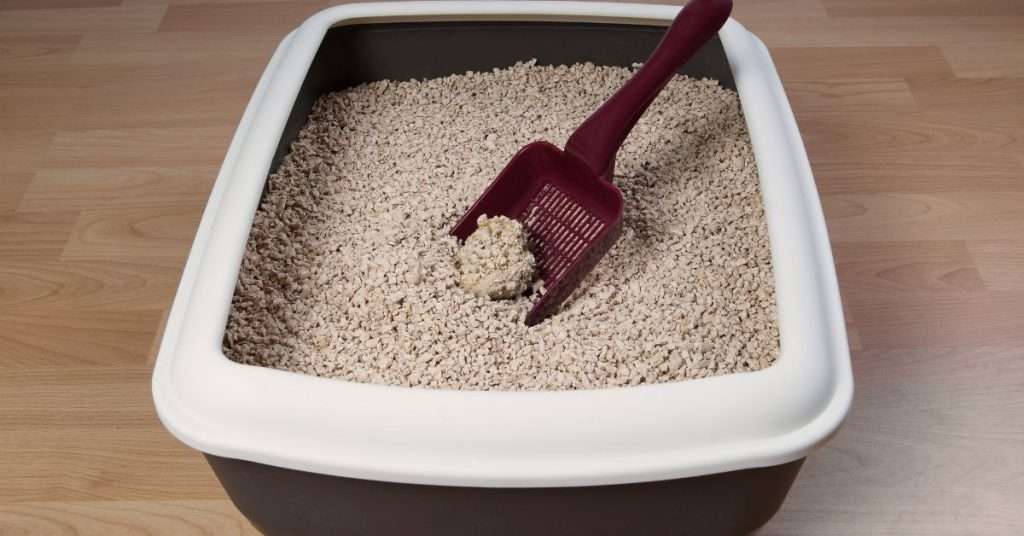If you’re like me, you love your cat but you don’t love the constant mess they make when using the litter box. And if you’ve ever tried to train your cat to use a top-entry litter box, you know that can be a real pain. But what if I told you there was an easy way to make your own top-entry litter box for cheap? All you need is a few simple supplies and some basic DIY skills. Keep reading for instructions on how to build your own top-entry cat litter box!

Anyone who has ever owned both a cat and a dog knows that the two animals can be natural enemies. Cats are typically fastidious creatures who prefer to do their business in private, while dogs are nosy explorers who want to sniff everything—including the cat’s litter box.
As a result, many dog owners find themselves constantly cleaning up messes made by their furry friends. One way to solve this problem is to switch to a top-entry litter box. These boxes are designed so that only the cat can enter, keeping inquisitive noses out.
In addition, they tend to be more odor-resistant than traditional liter boxes, making them ideal for homes with multiple pets. So if you’re looking for a way to keep your cat’s litter box clean and dry, a top-entry box is definitely worth considering.
Get More Detail About Cats Here: The Ultimate Guide To Pet Care
1). Buy a Plastic Storage Box
The first step is to find a suitable container for your top-entry litter box. A plastic storage box with a lid works well, as it will be sturdy and easy to clean. Avoid using a cardboard box, as it will quickly become soggy and fall apart.
Read More: What’s the Popular Brand of Cat Litter?
2). Cut a Hole in the Lid
Cutting a hole in the lid of your box is a necessary step in building a catio. The hole should be large enough for your cat to comfortably enter and exit, but not so big that your dog can fit through.
To determine the size of the hole, measure your cat from the top of their head to the base of their tail. Add 4 inches to this measurement and use this as the diameter of your hole.
For example, if your cat measures 12 inches from the top of its head to the base of its tail, you’ll want to cut a 16-inch hole in the lid of your box. Once you’ve determined the size of the hole, use a sharp knife or power drill to cut out the opening. Be sure to smooth any rough edges before continuing.

3). Add Litter
Once you’ve cut the hole in the box, it’s time to add litter. You can use any type of cat litter, although clumping litter is generally easiest to clean. Just pour a layer of litter into the box, and your cat will be able to do the rest.
Make sure to check the litter regularly, and scoop out any waste daily.
By keeping the litter clean, you’ll help your cat stay healthy and happy.
Learn More: How To Solve Cat Litter Box Behavioral Issues
4). Put the Lid on the Box
Putting the lid on the box is an important step in creating a successful litter box for your cat. The lid helps to contain the litter and prevent it from being scattered around the house.
It also provides some privacy for your cat and helps to keep the litter box clean.
Put the lid on the box and place it in a location that is convenient for your cat. You may need to experiment with different locations until you find one that your cat likes.
Read More: Best Type of Litter Box for a Vertical Peeing Cat

5). Enjoy a Cleaner Litter Box!
By following these simple steps, you can easily make your own top-entry litter box. This type of box is an ideal solution for homes with multiple pets, as it helps to keep the litter box clean and dry. So if you’re tired of constantly cleaning up after your cat, give this DIY project a try!
Optional: Add Carpet to the Lid
If you want to give your cat even more privacy, you can add a piece of carpet to the lid of the box. Cut a piece of carpet that is slightly larger than the hole in the lid.
Place the carpet on top of the lid and tape it down. This will create a snug fit that will keep out curious noses. Plus, your cat will appreciate the extra sense of security!
Note: This article contains accurate and reliable information that is based on the latest scientific research. However, it is not meant to substitute for professional medical advice, diagnosis, or treatment. If you have any concerns, please consult a qualified healthcare provider.
FAQs Regarding Top-Entry Litter Boxes
1. How often should I clean the top-entry litter box?
Like any other type of litter box, it’s important to clean the top-entry box on a regular basis. scoop out waste daily and perform a deep clean once a week. This will help keep the litter box fresh and odor-free.
2. What are some common problems with top-entry litter boxes?
One potential downside of using a top-entry box is that some cats may decide to urinate outside of the box. If this happens, you may need to experiment with different types of litter or litter boxes until you find one that your cat likes. Additionally, some cats may be hesitant to use a top-entry box at first. If this is the case, try placing the box in a quiet, secluded area of your home. Once your cat gets used to it, you can move it to a more convenient location.
3. Are there any special considerations I need to keep in mind when using a top-entry litter box?
Yes! It’s important to make sure that the hole in the lid of the box is large enough for your cat to comfortably enter and exit. The hole should also be small enough that your dog (or other pets) can’t fit through. Additionally, you’ll need to regularly scoop out waste and perform deep cleanings to keep the litter box fresh and odor-free.
Read More: Why Does Your Cat Urinate/Defecate Outside the Litter Tray?